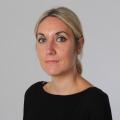
THE changing picture of Dorset’s Covid-19 situation can be seen in a series of maps on the government website.
The maps, which use data from Public Health England, give an encouraging snapshot as the number of cases continue to decrease.
Here we take a look back at how things have changed dramatically over the past four weeks.
November 14

The BCP area had five Covid ‘hotspots’, these were Bearwood, Winton, Moordown, Central Bournemouth and Springbourne & Queen's Park.
Winton had the highest number of cases at 62 with a rolling rate per 100,000 people of 649.2.
Central Bournemouth had 58 cases with a rate of 446.5, Springbourne & Queen's Park had 39 cases and a rate of 422.5.
Meanwhile, Bearwood and Moordown both had 37 cases with a rate of 673.3 and 457.0 respectively.
In the entire BCP area, there were 953 cases in total with a rolling rate of 241.1.
Dorset had 423 cases with a rate of 111.8.
Elsewhere, a number of areas across the conurbation had an MSOA between 201 and 400 including West Cliff, Talbot and Branksome Woods, Throop & Muscliffe, Broadstone, Poole Town and Parkstone.
In Christchurch, cases were relatively low with fewer than 10 cases in total across most areas apart from Jumpers Common & Fairmile which had 19 and a rate of 230.0.
November 21

A week later, the BCP area had just one 'hotspot' which was Bearwood with 41 cases in total and a rate of 746.1.
Cases had fallen dramatically in Winton to just nine giving a rate of just 94.2.
Moordown had 18 cases and a rate of 222.3, Central Bournemouth had 22 cases and a rate of 169.4, meanwhile Springbourne and Queen's Park had 17 cases and a rate of 184.2.
Many areas had transformed from dark blue to light blue or green.
In the west of the county, Lyme Regis, Charmouth & Marshwood Vale, Beaminster, Maiden Newton & Halstock, Burton Bradstock & Chideock, Bridport South & West Bay and Overmoigne, Broadmayne & Winterbourne all reported fewer than three cases in the seven days to November 21 showing in white meaning "suppressed".
Other "suppressed" areas were Gillingham Outer, Bourton & Motcombe, Sturminster Newton & Stalbridge, Wareham, Sandford & Holton Heath, Alderholt & Sixpenny Handley and Branksome East.
In total, BCP recroded 585 cases in the seven days to November 21 with 260 in Dorset.
The rate for BCP was 148.0 and 68.7 in Dorset.
November 28

By November 28, huge swathes of Dorset were showing as "suppressed" in an encouraging sign the lockdown was having an effect on the spread of the virus.
Several areas had transformed to white including Kinson West, Colehill, Ferndown wEst and Canford Bottom, St Leonards, Queens Park, Jumpers Common and Fairmile, Somerford and Corfe Castle and Langton Matravers.
In total, there were more than 20 areas all recording fewer than three cases in the seven days to November 28.
Across BCP, the total number of cases had dropped to 339 giving a rate of 85.8, Dorset had 168 cases with a rate of 44.4.
December 5

By the time lockdown had ended, the BCP area saw 249 cases confirmed in the seven days to December 5 with a rolling rate of just 63.0.
In Dorset, there were 150 cases and a rate of just 39.6.
More areas across BCP had "suppressed" cases including Canford Heath West, Creekmoor, Rossmore, Kinson East, Soutbourne West, Iford, Creekmoor, Hamworthy East, and even Central Bournemouth.
Many areas that were blue had become green or even light green in an encouraging sign.
Dorset was placed into Tier 2 from December 2 with residents encouraged to follow the rules in the hope the county may be put into Tier 1 measures when the first review of the rules takes place on December 16.



Comments: Our rules
We want our comments to be a lively and valuable part of our community - a place where readers can debate and engage with the most important local issues. The ability to comment on our stories is a privilege, not a right, however, and that privilege may be withdrawn if it is abused or misused.
Please report any comments that break our rules.
Read the rules hereLast Updated:
Report this comment Cancel